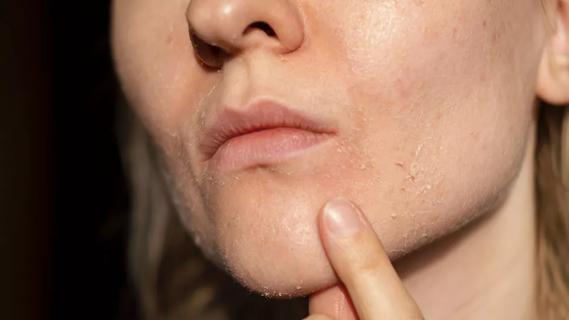Sea lice aren’t really lice, but these tiny creatures can trigger an unpleasant allergic reaction

If you’re looking to spend some time on the beach this summer for a well-deserved seaside vacation, you’ll need to make sure you have all the essentials packed and ready to go. Sunscreen. Water. Enough healthy snacks to go around. Maybe you even keep an eye out for pesky sea lice and signs you’ve been stung.
Wait ... what?
Advertisement
Cleveland Clinic is a non-profit academic medical center. Advertising on our site helps support our mission. We do not endorse non-Cleveland Clinic products or services. Policy
Before you completely avoid open ocean water, know that sea lice and their associated rash, known as seabather’s eruption, aren’t much of a serious concern. Sea lice aren’t like your typical head lice. Although seabather’s eruption can be uncomfortable, it’s typically easy to spot and fairly easy to treat.
Urgent care physician Allan Capin, MD, explains just what sea lice are and how to treat the rash commonly associated with these creatures.
Seabather’s eruption is a skin rash that develops when tiny, transparent larvae from jellyfish or sea anemones hitch a ride on your swimsuit or other clothing. These tiny creatures are almost impossible to see with the naked eye as they float on the surface of the water.
Although these larvae are commonly called “sea lice,” this term is misleading. These ocean dwellers aren’t related to head lice. They don’t intentionally bite you or feed off your blood. Instead, these larvae release a stinging toxin into your skin as a defense if they remain trapped in your swimsuit long enough or become pressed against your skin.
“Seabather’s eruption is an allergic reaction to the toxins released by sea lice larvae,” explains Dr. Capin. “Children tend to have a more severe reaction than adults, but it affects people of all ages.”
Advertisement
And if you get seabather’s eruption more than once, the rash could get worse each time. Fortunately, most people won’t experience anaphylaxis (a life-threatening allergic reaction), even if they have other allergies.
If you’ve been swimming with sea lice, you’ll likely develop a reaction within 24 hours. Sometimes, the reaction can occur minutes after getting out of the water or even hours later.
“You can often identify seabather’s eruption by looking at the pattern of the rash,” explains Dr. Capin. “A sea lice rash affects areas covered by your bathing suit, so you don’t usually see it on your legs, arms, hands and feet. But you might also find it on your head, in facial hair or places where you have a lot of body hair and sea lice become trapped or pressed against your skin.”
A sea lice rash is usually:
Some people, especially children, can have systemic (whole-body) symptoms, including:
The larvae that cause seabather’s eruption only live in saltwater oceans and seas, not freshwater lakes. Sea lice are also most common along the coast of Florida and the Caribbean. You’re more likely to encounter the problem from March through August, with peaks in May and June.
“Sea lice larvae can be unpredictable because they come and go with ocean drifts and the Gulf Stream,” notes Dr. Capin. “If you got seabather’s eruption at a particular beach last year, that same beach might be free and clear this year — and vice versa.”
There are a few ways you can skip a potential run-in with sea lice — or at least prevent a severe rash:
Advertisement
You can find some relief from seabather’s eruption with at-home treatments and remedies, including:
In some cases, a prescription medication is necessary to clear up seabather’s eruption. “Doctors may prescribe a stronger medication if the rash affects your face, groin or armpits,” says Dr. Capin. “These areas tend to be more sensitive and more prone to severe inflammation and itching.”
Advertisement
A sea lice rash usually goes away within two weeks, but it can take up to a month to clear up completely depending on the severity of your rash and how quickly your body heals. For most people, the worst part is the itching and discomfort. But anytime you have a rash or break in your skin, there’s the added risk of infection.
If you notice any of these possible signs of infection, contact a provider:
Seabather’s eruption usually isn’t serious, but its name and nature raises a lot of red flags, especially for beach-going parents and caregivers looking to take a load off. Fortunately, you can usually avoid this nuisance by monitoring health reports and showering soon after you swim.
“If you plan to swim in the ocean, take a few precautions first,” advises Dr. Capin. “Choose a spot that has a private area to change and shower after swimming, and you can focus on relaxing, rather than a rash.”
Advertisement
Learn more about our editorial process.
Advertisement

Tough times can become even tougher if they leave an itchy rash on your skin

Lifestyle adjustments like stress reduction, wearing softer clothing and staying out of the sun can help manage flares

Your provider can develop a personalized treatment plan, which may include prescription medications, antihistamines and corticosteroids

Infections, autoimmune conditions, major life changes, extreme temps and even sunlight can cause this itchy condition

The fluctuation in your hormones can cause the red, itchy welts

Combat stress and anxiety — common chronic hives triggers — by focusing on sleep, staying active and leaning on others for support

Rarely are the red, itchy welts from chronic hives connected to what you eat

A distressed skin barrier can lead to red, itchy and scaly skin

The best parenting style balances enforcing rules and showing plenty of love

Tips include cutting back on sugar, focusing on exercise and managing stress

It can be harder to let go when you’ve invested time, energy and emotions — but it might be the healthier choice long term